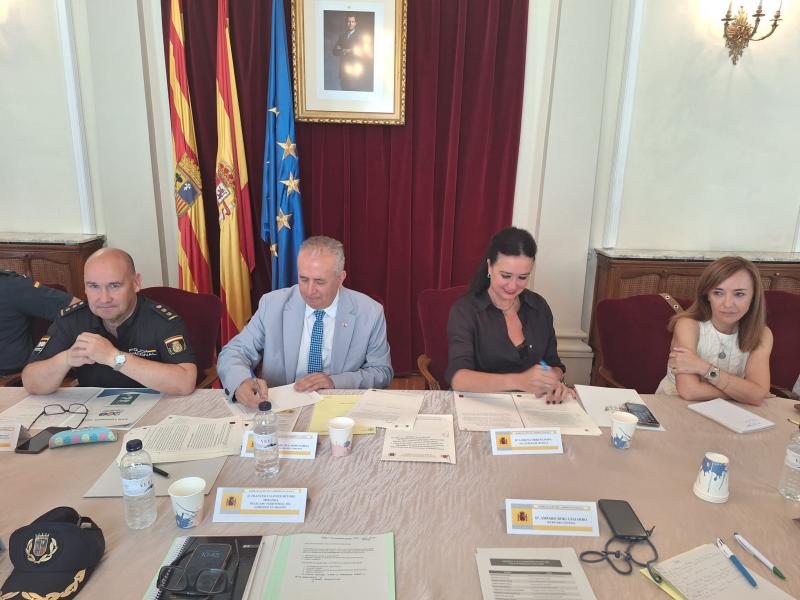Huesca.- The Security Board of Huesca, co-chaired by the subdelegate of the Government in Huesca, Carlos Campo, and the mayor of Huesca, Lorena Orduna, has met this Monday to coordinate the police device that will ensure security during the next festivities of San Lorenzo. The junta was also attended by, among others, the territorial delegate of the Government of Aragon, Javier Betorz, as well as representatives of the Local Police, the Seconded Police and the Civil Guard.
National Police, Local Police, Seconded Police and Civil Guard will work in a coordinated way to ensure the good development of the festivities. The chief commissioner of the National Police in Huesca, Luis Fernando Ascaso, has detailed that device will have more than 300 National Police personnel, with reinforcements from Zaragoza, Jaca and Canfranc. In total, the sum of National Police, Local Police, Seconded Police and Civil Guard will involve a deployment of about 450 agents throughout the city.
The National Police device will start on the 8th and will pay special attention to the most multitudinous acts, where emphasis will be placed on the prevention of theft - mainly from mobiles -, fights and machista aggressions. As news of this year, the Huesca Police Station will deploy mobile cameras to control specific points and will distribute identification bracelets for minors, to facilitate the location of their parents in case children are lost. In addition, it will maintain the anti-drone system to detect and neutralize aircraft that fly without the appropriate permits and may pose a security risk.
The Civil Guard will monitor the accesses to the city, while the Seconded Police will ensure compliance with the regulations of public shows and entertainment venues.
New VioGen System Convention
The Local Security Board held today has also ratified the new operating procedure of the VioGén System between the National Police and the Local Police of Huesca, signed by the mayor of Huesca, Lorena Orduna, and the deputy delegate of the Government, Carlos Campo.
This agreement replaces the one signed in 2018, and incorporates the modification of the levels of risk (the “not appreciated” disappears, becoming the classification “low”, “medium”, “high” and “extreme”), in addition to contemplating that the Local Police assume the follow-up of a minimum of 50%, expandable up to 100%, of the cases in low risk. In the remaining cases, the National Police maintains the follow-up tasks for the protection of victims.
Through the update of the protocol of the Ministry of Interior, new criteria are incorporated to improve the protection of victims, among which the monitoring of especially vulnerable cases, the protection of minors living at home and the attention to security in digital environments stand out.
